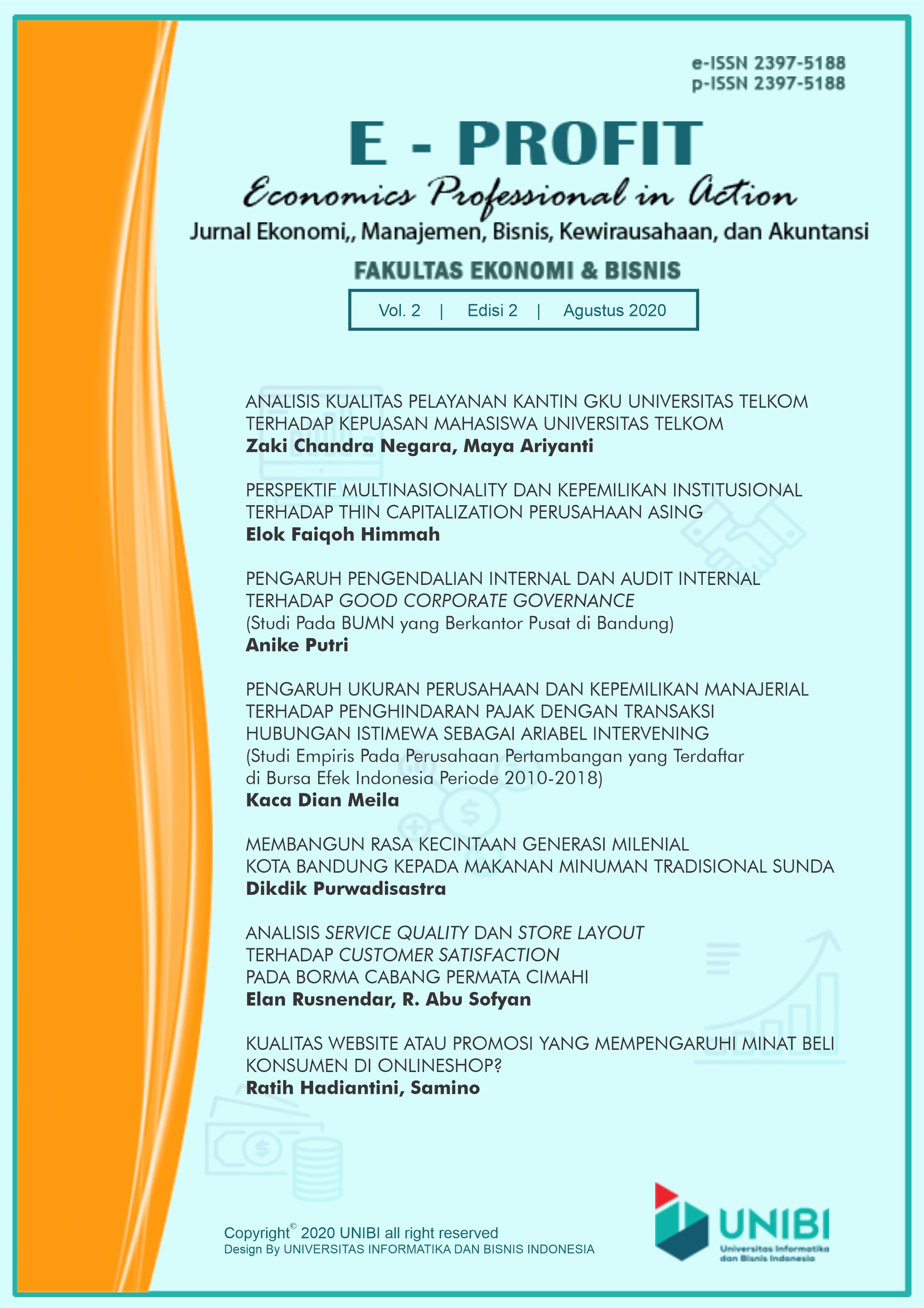Analisis Service Quality dan Store Layout terhadap Customer Satisfaction pada Borma Cabang Permata Cimahi
DOI:
https://doi.org/10.37278/eprofit.v2i2.309Keywords:
Service Quality, Store Layout, Customer SatisfactionAbstract
This study aims to determine the effect of service quality and store layout on customer satisfaction in the Borma Permata Cimahi. The population used in this study was the visitors of Borma Permata Cimahi. The sampling technique used purposive sampling method with a total sample of 100 people. Data collection techniques using questionnaires that have been tested for validity and reliability. Data analysis techniques used to answer hypotheses using t test and f test and multiple determination test.
The results of the study show that: (1) In the partial test t obtained for service quality is 2,962 greater than t table of 1,98, so it can be concluded that service quality has an effect on customer satisfaction. (2) The result of partial store layout test obtained t count of 2,975 greater than the value of t table of 1,98, so that it can be concluded that store layout has an effect on customer satisfaction in the Borma Permata Cimahi. (3) In simultaneous testing (f test) obtained F value calculated at 15,428 the value is greater than the value of F table of 3,09 so that it can be concluded, that service quality and store layouts simultaneously influence customer satisfaction in the Borma Permata Cimahi
Downloads
Published
How to Cite
Issue
Section
License
Authors who publish articles in Economics Professional in Action (E-Profit) agree to the following terms:
- Authors retain copyright of the article and grant the journal right of first publication with the work simultaneously licensed under a CC-BY-SA or The Creative Commons Attribution-ShareAlike License.
- Authors are able to enter into separate, additional contractual arrangements for the non-exclusive distribution of the journal's published version of the work (e.g., post it to an institutional repository or publish it in a book), with an acknowledgment of its initial publication in this journal.
- Authors are permitted and encouraged to post their work online (e.g., in institutional repositories or on their website) prior to and during the submission process, as it can lead to productive exchanges, as well as earlier and greater citation of published work (See The Effect of Open Access).















